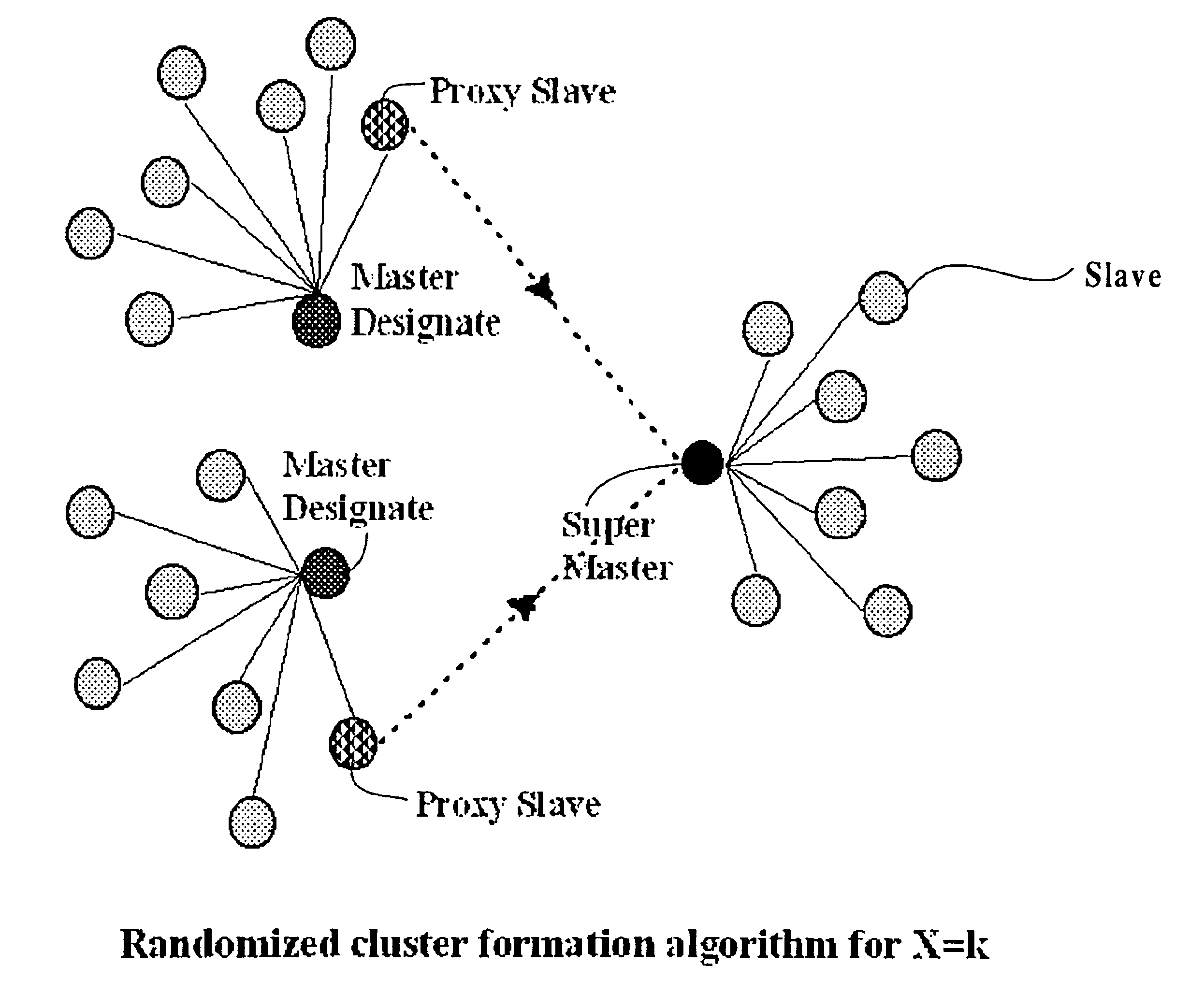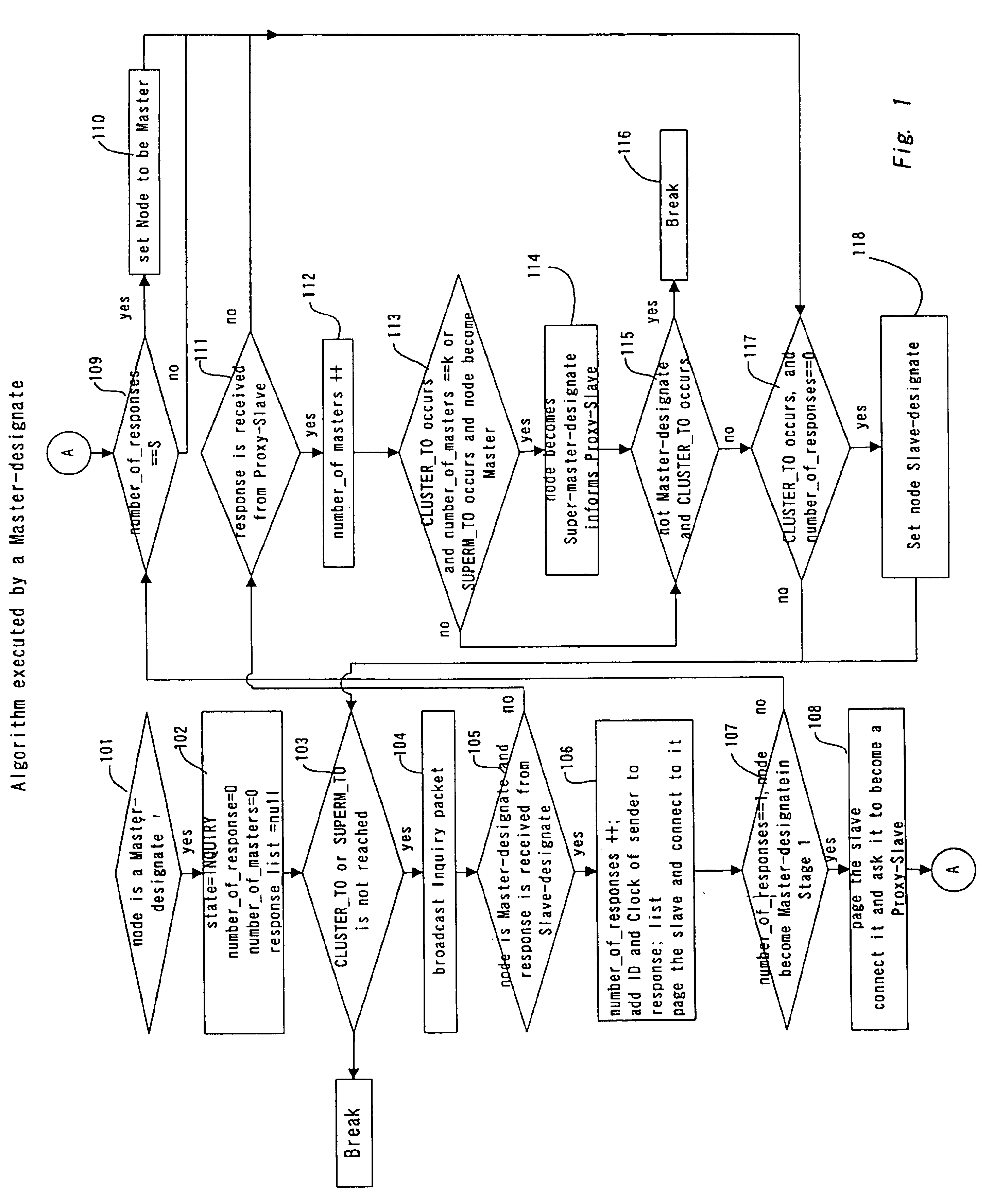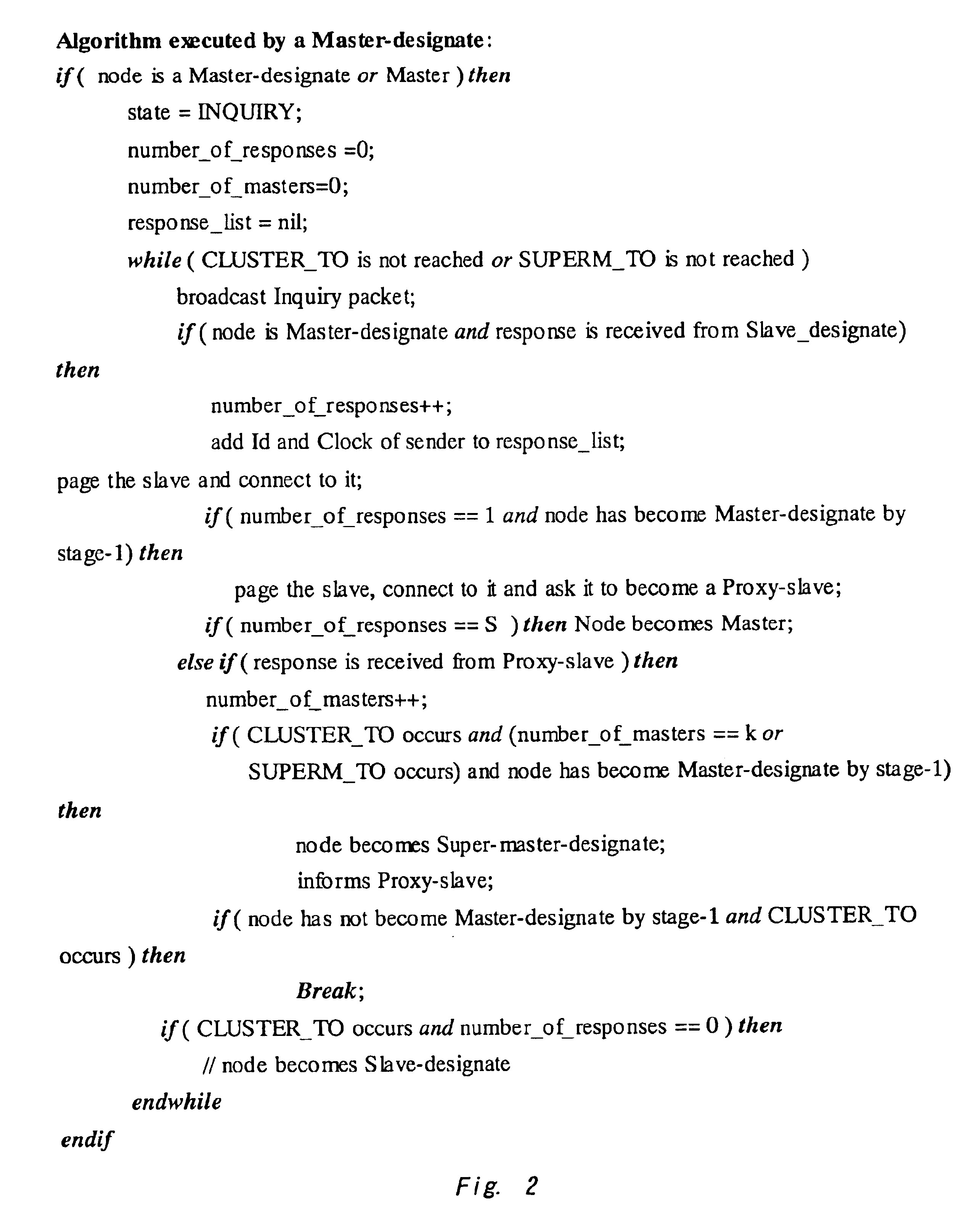Clustering in wireless ad hoc networks
a wireless ad hoc network and clustering technology, applied in the field of clustering in wireless ad hoc networks, can solve the problem that the entire clustering process will take less time, and achieve the effect of speeding up the network formation process
- Summary
- Abstract
- Description
- Claims
- Application Information
AI Technical Summary
Benefits of technology
Problems solved by technology
Method used
Image
Examples
Embodiment Construction
As briefly summarized above, the present invention uses two significant techniques. The first technique may be implemented in several ways. For example, the bits may be used to convey how many responses a particular node has received till that point in time. This is applicable when the nodes carry out alternate inquiry and scan, and the device which has collected enough slaves, either directly or indirectly, becomes the clusterhead. These bits may also be used to convey whether the replying node is already part of a cluster or not. These bits may be used for connecting clusters together to form a network, where a node which is already part of a cluster continues to scan or inquire in order to discover other clusters. In another embodiments, the bits may also be used to indicate whether or not the replying node is a clusterhead, i.e., a Master-designate. In further another embodiment, the bits may be used to convey how many clusters the replying node is already a part thereof. The ab...
PUM
 Login to View More
Login to View More Abstract
Description
Claims
Application Information
 Login to View More
Login to View More - R&D
- Intellectual Property
- Life Sciences
- Materials
- Tech Scout
- Unparalleled Data Quality
- Higher Quality Content
- 60% Fewer Hallucinations
Browse by: Latest US Patents, China's latest patents, Technical Efficacy Thesaurus, Application Domain, Technology Topic, Popular Technical Reports.
© 2025 PatSnap. All rights reserved.Legal|Privacy policy|Modern Slavery Act Transparency Statement|Sitemap|About US| Contact US: help@patsnap.com



